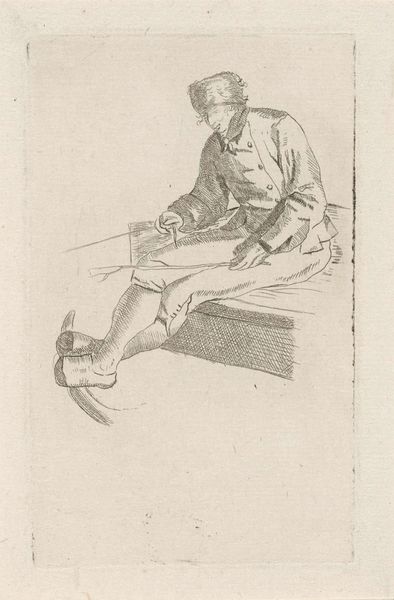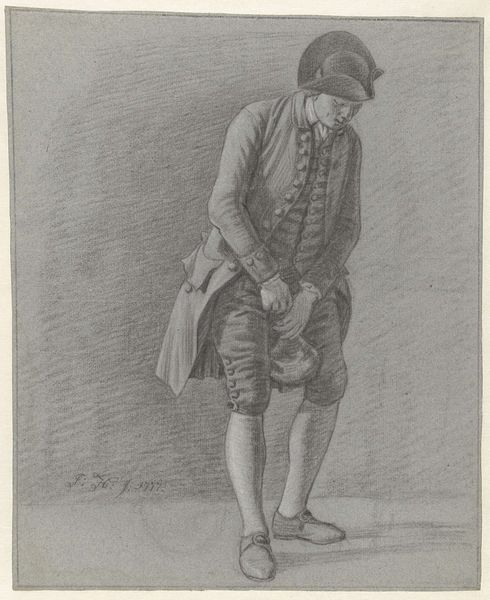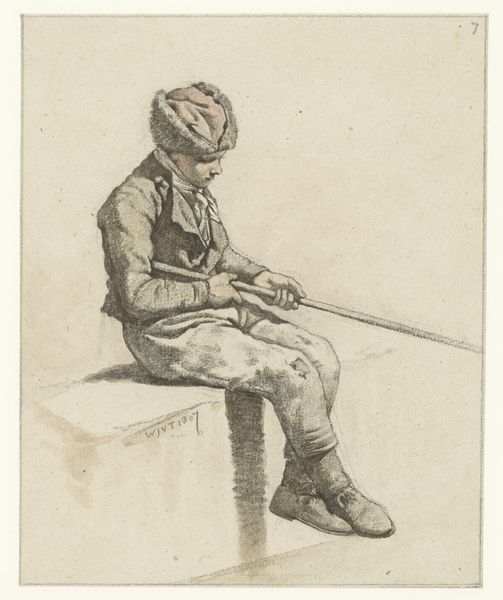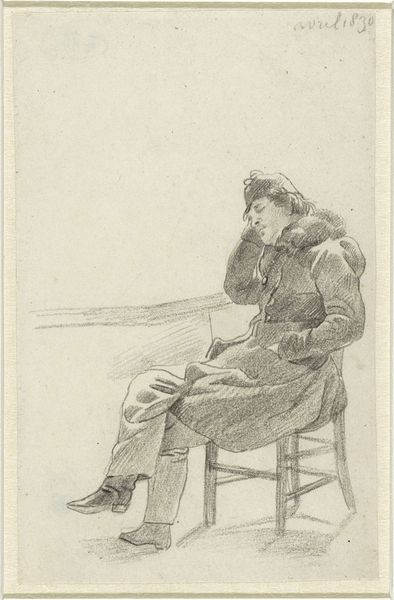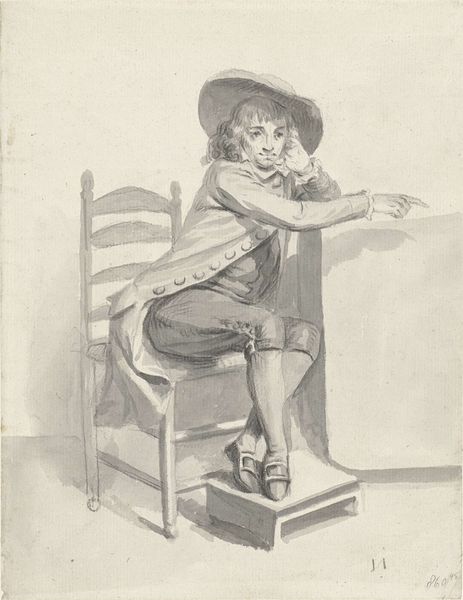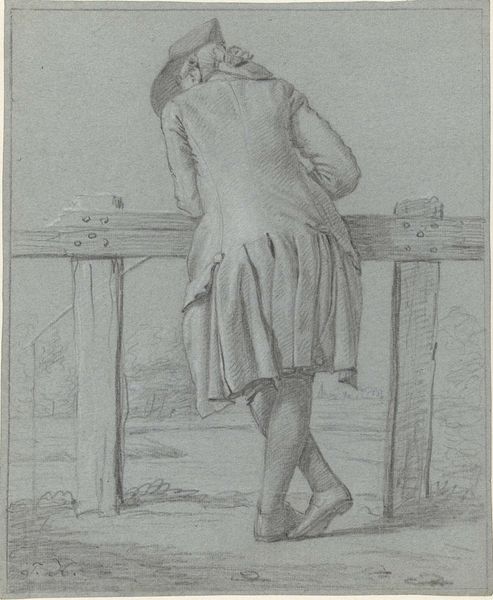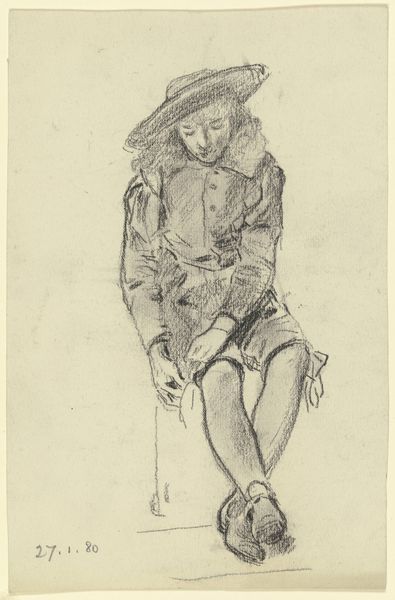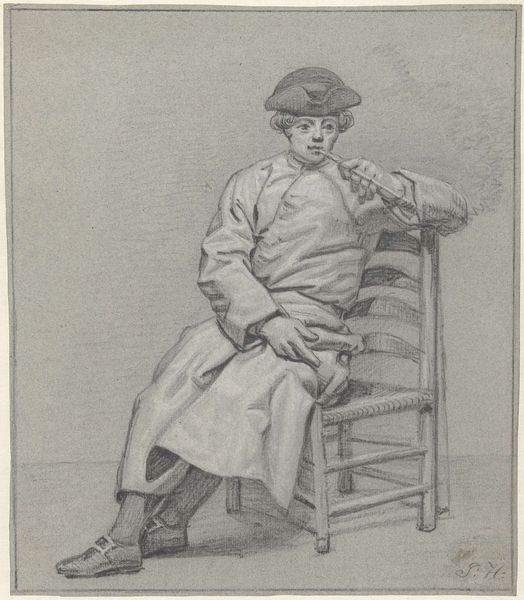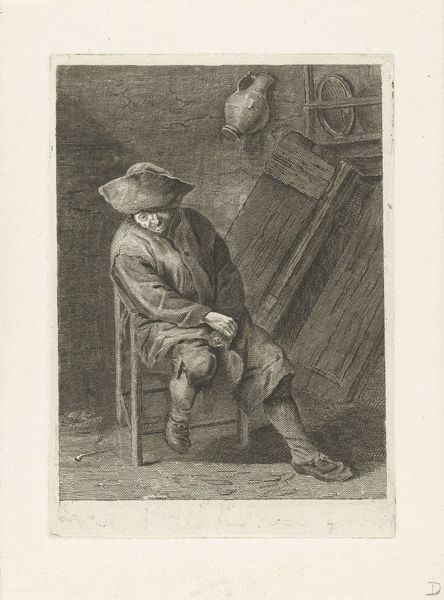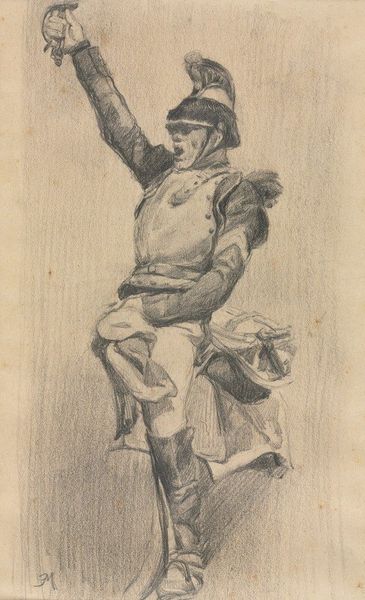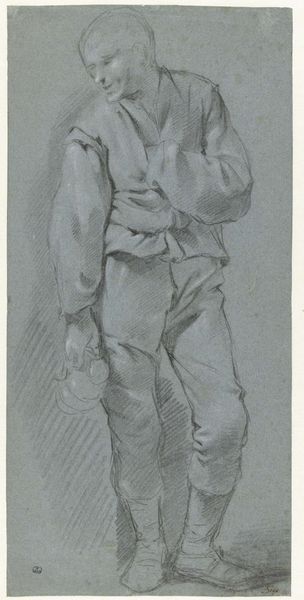
drawing, pencil
#
portrait
#
pencil drawn
#
drawing
#
pencil sketch
#
pencil drawing
#
romanticism
#
pencil
#
portrait drawing
#
genre-painting
Dimensions: height 331 mm, width 277 mm
Copyright: Rijks Museum: Open Domain
Editor: This drawing, "Young Man Putting on His Boots" by Jordanus Hoorn, dating from 1763-1833, is rendered in pencil. There's a wonderful simplicity to it, a sense of everyday life captured in the moment. What strikes you most about this piece? Curator: I’m interested in the *how* of its production. Look at the deliberate use of pencil. Pencil, at the time, was increasingly available as a manufactured product. It signifies a shift away from artisanal preparation towards industrialized material consumption, even within the seemingly individual act of artistic creation. The lines aren't spontaneous. Hoorn would have chosen that pencil, that paper. The softness or hardness of the graphite – did that play a part in representing his subject? Editor: That's fascinating, I never thought about the pencil itself as a key element. How does the choice of such a readily available material relate to the genre-painting aspect? Curator: Genre painting itself became more widely popular as printing technology enabled broader audiences to engage with scenes of daily life, mediated through mass reproduction and availability of affordable artworks. How are the themes of production, labor, and distribution implicated in the work? Is he portraying someone setting off to work, or getting ready for something else? Editor: Hmm, his somewhat plain clothing would suggest work or travel rather than some social outing. It's as if Hoorn documented someone about to participate in the economy, using a tool which itseld represented changes in production and economic growth... Thank you! Curator: Consider, too, what its original viewing context might have been, whether for domestic viewing or study. Material conditions dictate how a piece is made and received, after all. Something to ponder.
Comments
No comments
Be the first to comment and join the conversation on the ultimate creative platform.
